The world’s safest (and least safe) planes
By Oliver Smith
Hong Kong’s flag carrier, Cathay Pacific, last month cancelled dozens of flights after a service from Zurich was forced to turn around due to an “engine component failure”.
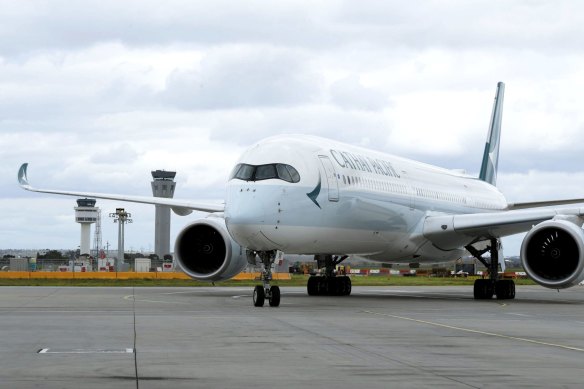
Cathay Pacific grounded its Airbus A350s last month after discovering a problem with one plane’s engines.
The airline has now inspected all 48 of its Airbus A350s – which use Trent XWB-97 engines made by British firm Rolls-Royce – and found 15 with faulty parts that needed to be replaced. The jets will need to remain grounded until the repairs are completed, so more cancellations were expected.
“The safety of our customers… guides every decision we make,” said Cathay Pacific. “We sincerely apologise for the inconvenience caused.”
There is no indication that faults exist with other A350s, a model used by numerous airlines. However, Japan Airlines and Singapore Airlines, two others that operate A350s, have confirmed that they are carrying out checks. The latter added “it is in contact with Airbus and Rolls-Royce on the ongoing issue with the Trent XWB engines”.
Rolls-Royce, whose XWB exclusively powers the A350, said “it is committed to working closely with the airline, [Airbus] and the relevant authorities to support their efforts.” It added: “[We] will also keep other airlines that operate Trent XWB-97 engines fully informed of any relevant developments as appropriate.”
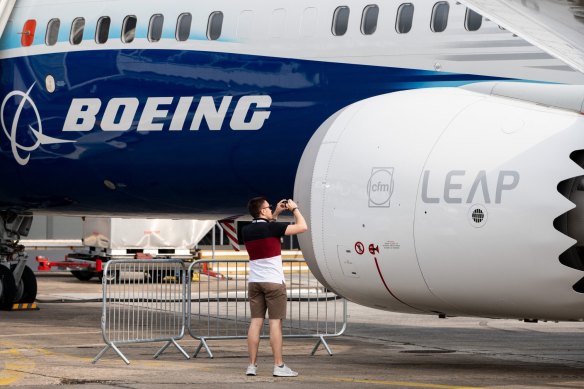
The Boeing 737 Max was involved in two fatal crashes not long after the aircraft launched.Credit: Bloomberg
In a statement, the European Union Aviation Safety Agency said it is “monitoring any information coming out of the technical investigation and will take decisions on any fleet level action as required”.
Cathay Pacific’s problems come with aviation already under the spotlight over safety. Airbus’s arch-rival Boeing has endured a torrid few years, including an FAA investigation into the botched development of the short-haul 737 Max 8. Some 346 people died in two separate disasters in 2018 and 2019 when first a Lion Air Max 8 and then an Ethiopian Airlines Max 8 crashed shortly after take-off. Boeing’s woes deepened earlier this year when a door panel on an Alaska Airlines 737 Max blew out at 16,000ft.
The A350’s flawless record
Nevertheless, it should be noted that flying has never been safer. Last year, according to the International Air Transport Association (IATA), was the safest on record, with just a single fatal accident involving a commercial passenger plane (the crash of Yeti Airlines Flight 691, which killed 72 people). That’s despite there being 37 million aircraft movements in 2023, an increase of 17 per cent on the previous year. For comparison, on average 148 people die every hour in road accidents, according to UN figures.
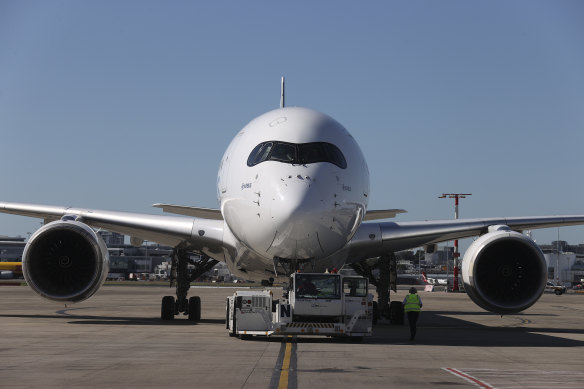
The Airbus A350 ranks as one of the safest airline models ever built.
Furthermore, the A350, which was introduced in 2015, ranks as one of the safest models ever built, having experienced just a single hull loss in its decade of service: a runway accident on January 2 this year, when a Japan Airlines jet collided with a smaller coastguard plane on the runway at Tokyo Haneda.
Only seven major models can boast a flawless record: the Boeing 717 (out of production since 2006), the Bombardier CRJ700 series (favoured by airlines around the world for regional services), the 747-800 (the jumbo jet’s final series), the A380 “superjumbo” (out of production since 2021), the Airbus A220 (originally developed by Bombardier as the CSeries), the A330neo (introduced in 2018), and the Boeing 787 Dreamliner. That’s according to Boeing’s own data, covering the period from 1959 to 2023.
Where does the 737 Max rank?
The stats don’t quite look so rosy for the 737 Max. Those two fatal crashes early in its existence mean it has a “hull-loss with fatalities” accident rate of 0.7 per million departures – above the average of 0.55 for the 64-year period in question. However, with 1586 of the 737 Max aircraft now built, and thousands of flights landing safely every week, that ratio is quickly improving.
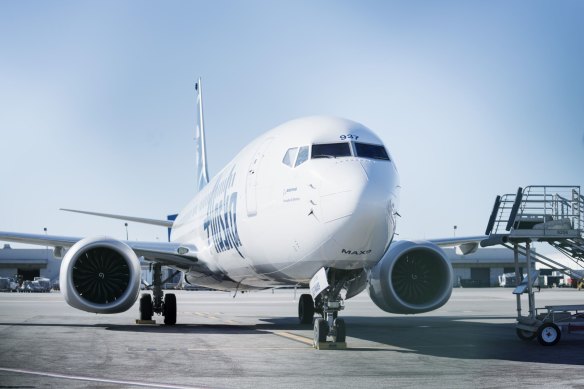
More than 1500 Boeing 737 Max planes have now been built.Credit: Bloomberg
Passengers should be comforted by the extraordinarily low accident rates on other popular aircraft. For the 777, Boeing’s long-haul workhorse, the rate is 0.13. The 737 “Next Generation” family? That would be 0.08.
Other models might give pause for thought. The A310 family, out of production since 1998 but still in the fleets of little-known airlines including Iran Air and Ariana, has a “hull-loss with fatalities” accident rate of 1.89 per million departures – still small, but markedly higher than more modern jets. For the McDonnell Douglas MD-11, another rarity in 21st-century skies, it is 1.58. For the Fokker F28, now almost entirely absent from the heavens, it is 2.31.
What about Concorde?
Boeing’s data, the source for the table above, only includes aircraft that have operated commercially in the past five years – which means no Concorde, Comet, 707, Trident, VC10, DC-8 or 747-100/-200/-300/SP, among others.
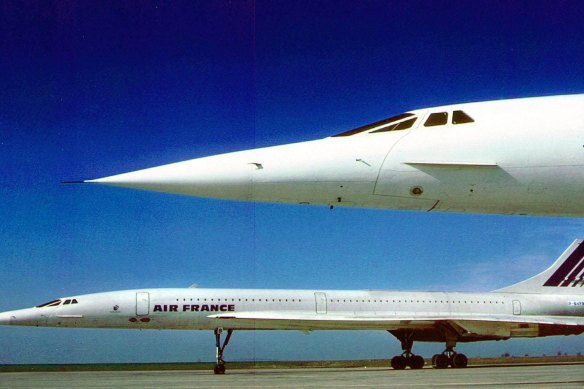
The supersonic Concorde had one fatal crash, but did not fly as many times as other aircraft, giving it a poor safety ratio.Credit: AP
The figure for the DC-8, not built since 1972 and now little more than a museum piece, is about 4. For the 707, out of production for over 40 years, it is 4.28. And Concorde would certainly sit near the bottom of the table. It was involved in just one fatal crash but only flew 90,000 times – that’s 11.36 per million departures.
What about Soviet-era aircraft?
Statistics for such aircraft are hard to come by, but some of the most popular models from the Soviet era would almost certainly make the lower end of our table. The Tupolev Tu-104, for example, the first Soviet jet airliner (of which 200 were built), was involved in a remarkable 33 hull-loss accidents resulting in 1028 fatalities, according to the Aviation Safety Network database. The Ilyushin Il-18, of which an estimated 678 were made, had 97 hull-loss accidents resulting in 2483 deaths.
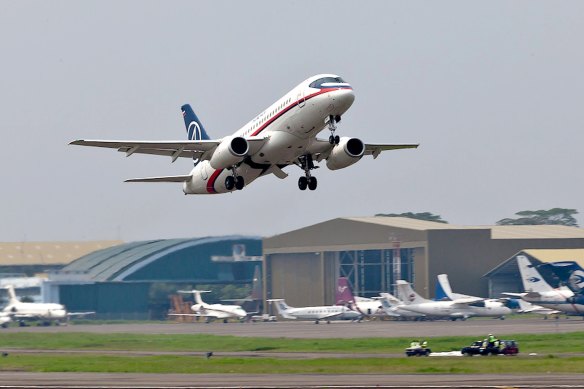
The Sukhoi Superjet-100 had a troubled introduction.Credit: AP
Since the end of the Cold War, Russian manufacturers have been unable to compete with the Boeing-Airbus duopoly, and few Soviet-era aircraft are still in service. However, Moscow firm Sukhoi, historically associated with military planes, has attempted to revive the fortunes of Russia’s civilian aircraft industry with its Superjet 100. This new model, like the 737 Max, also had a troubled introduction.
How to find out your aircraft model before you fly
Some airlines only use one model, though Australian airlines tend to have a variety of jets. Qantas’ fleet features Airbus A380s and A330s, along with Boeing 787 Dreamliners and 737s. It will soon add Airbus A321s and A350s to its collection, the latter to fly its planned ultra-long-haul Project Sunrise flights to London and New York. Virgin Australia mostly flies 737 variants with a few Airbus A320s, while Jetstar uses mostly Airbus A320 variants with 787 Dreamliners for its international routes.
Most airlines will provide information about the type of plane you’ll be flying on at the time of booking (you might need to click links for “flight details” when looking at the options).
To find out which model your next flight will be using, you can visit a flight tracking site like FlightRadar24. Searching your flight number will show all the most recent flights, which usually indicates the type of aircraft commonly used on the route. For example, flight Qantas flight QF2 from Sydney to London via Singapore is always flown by an A380 superjumbo. Closer to departure you should be able to see the exact aircraft, including its registration number.
The Telegraph, London
Sign up for the Traveller newsletter
The latest travel news, tips and inspiration delivered to your inbox. Sign up now.